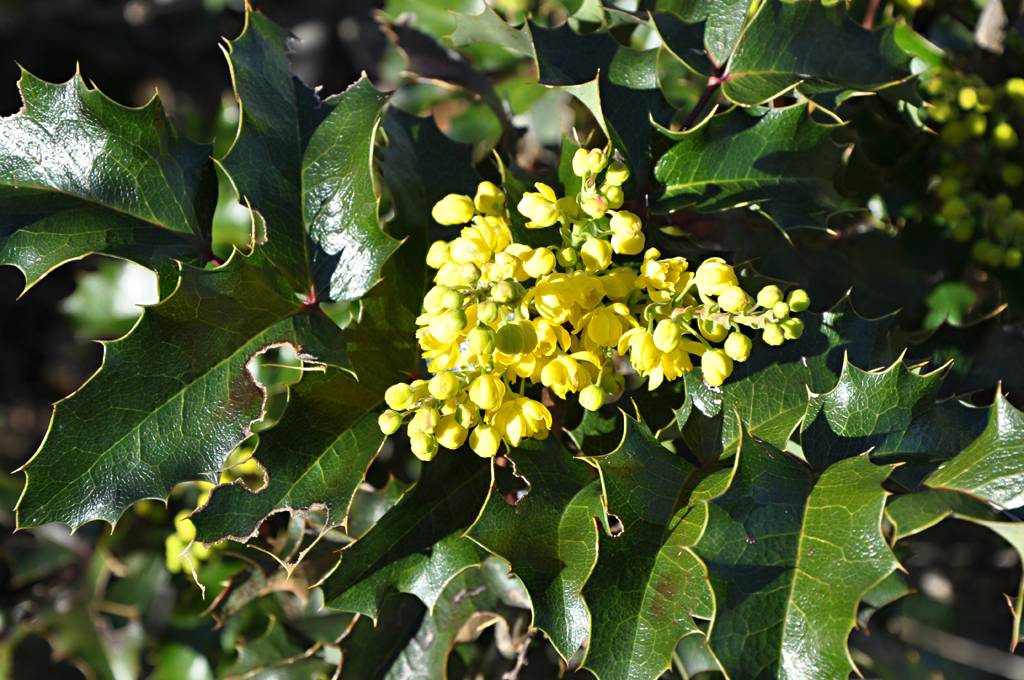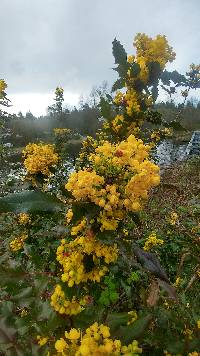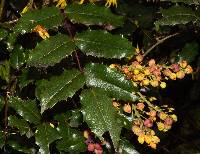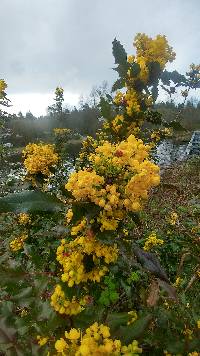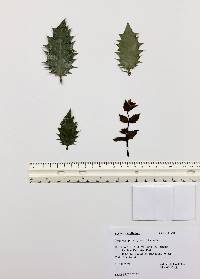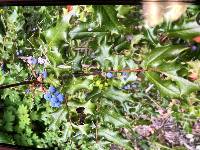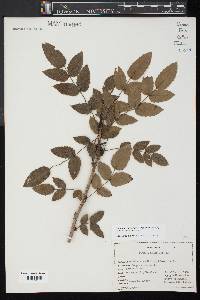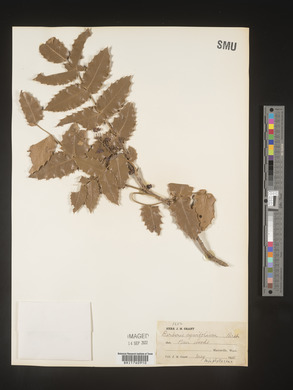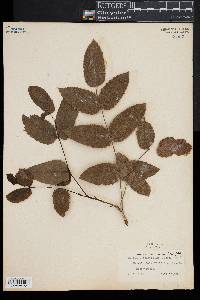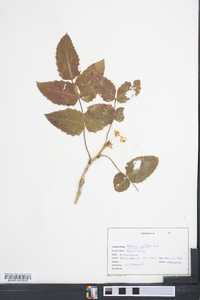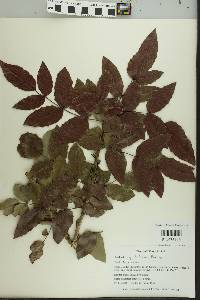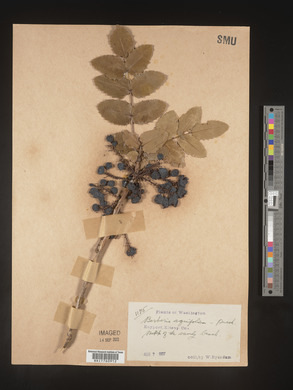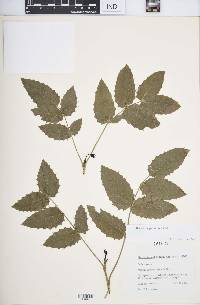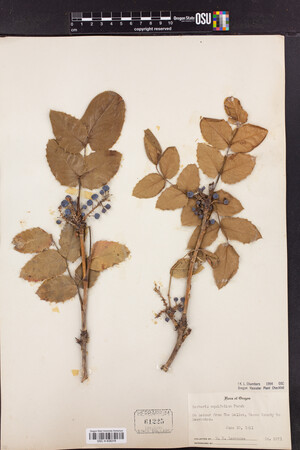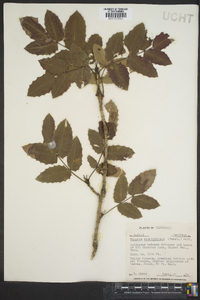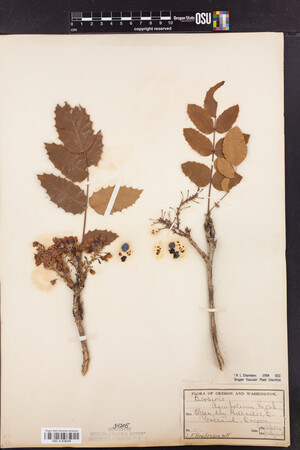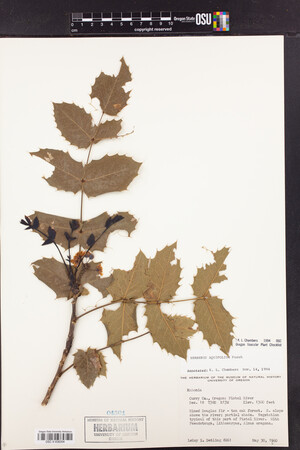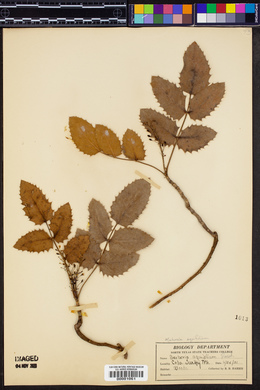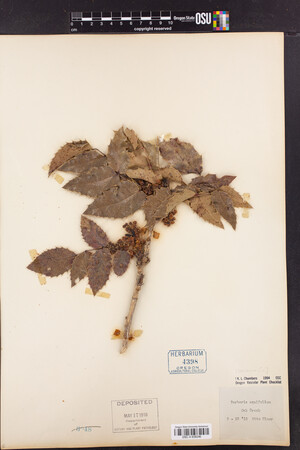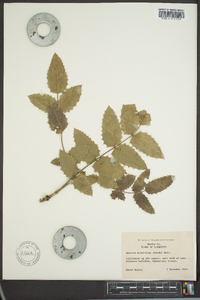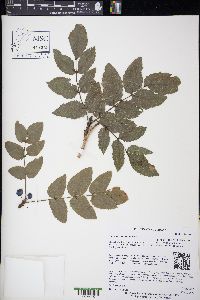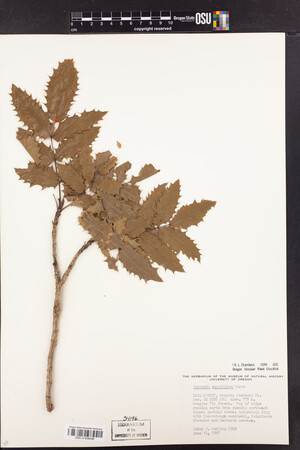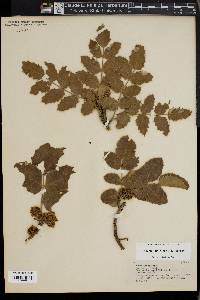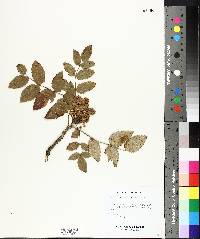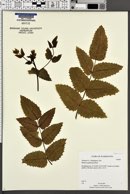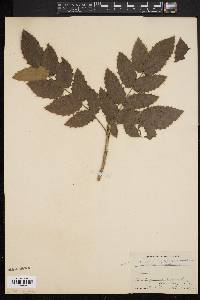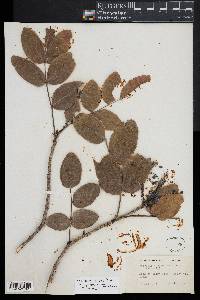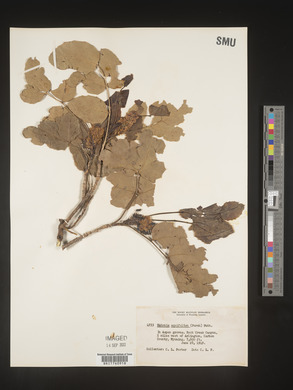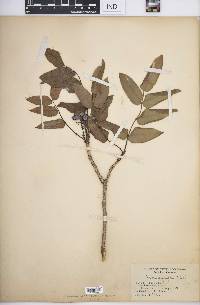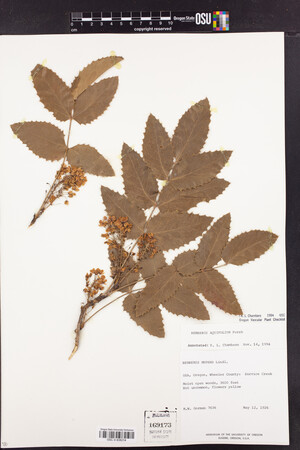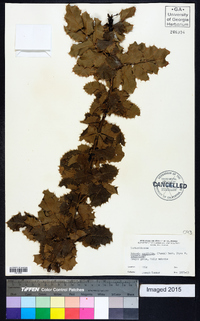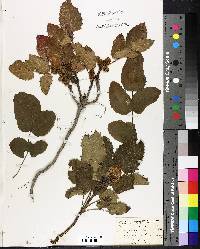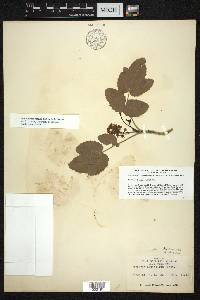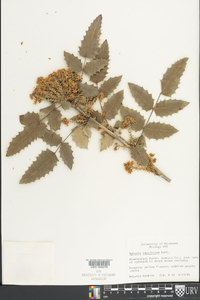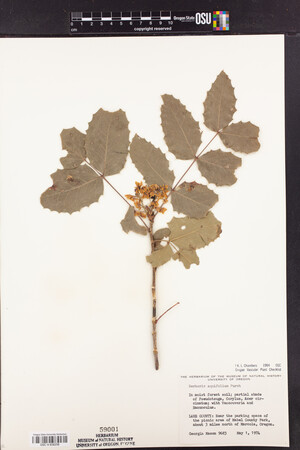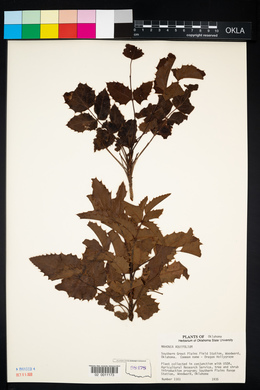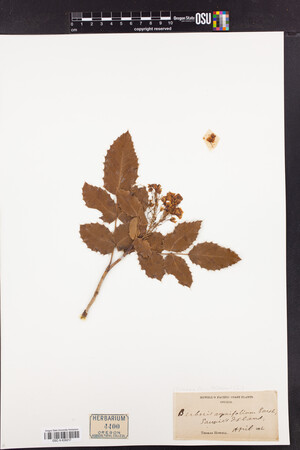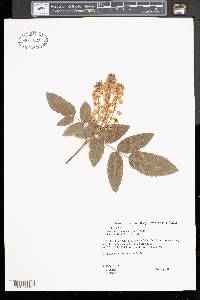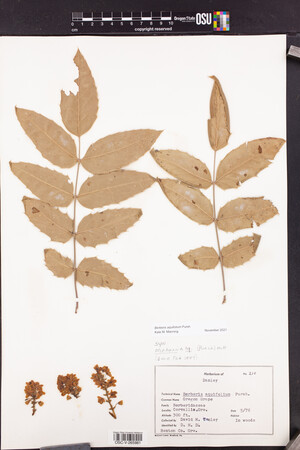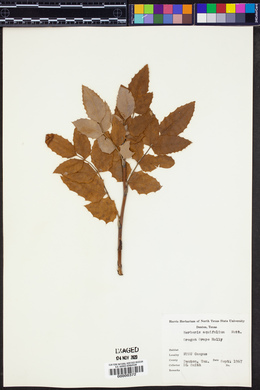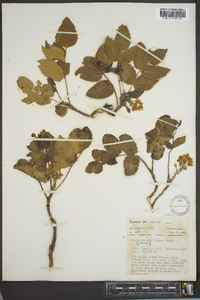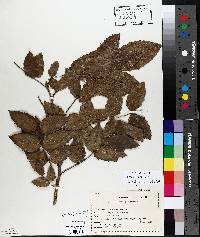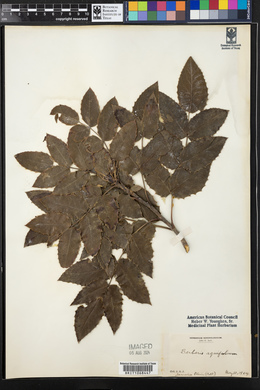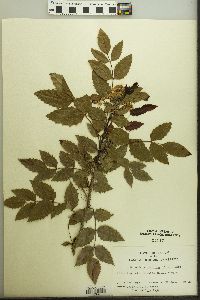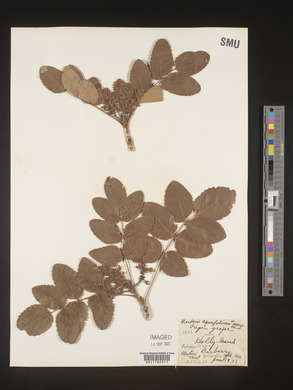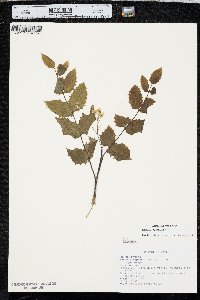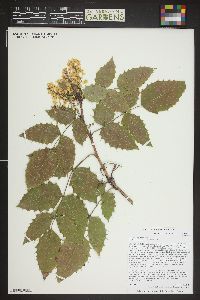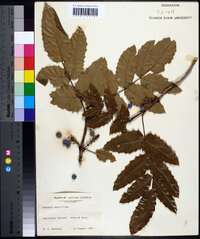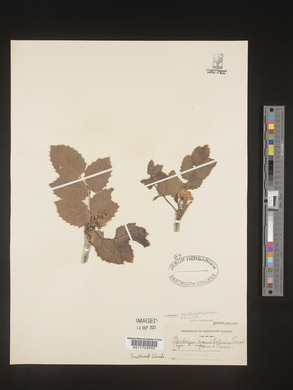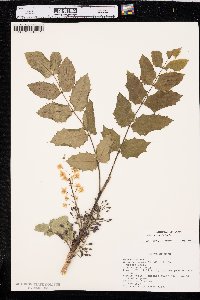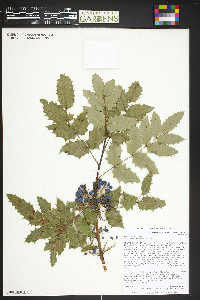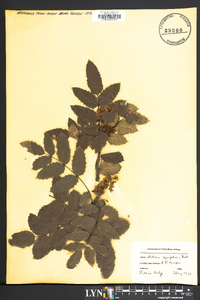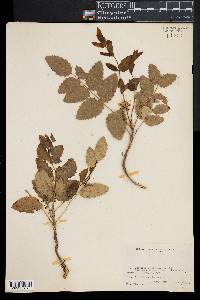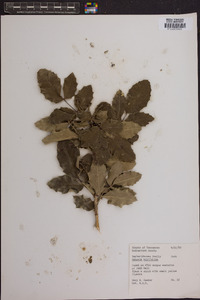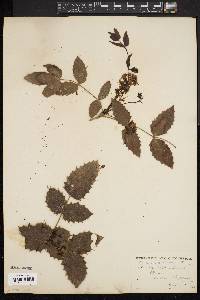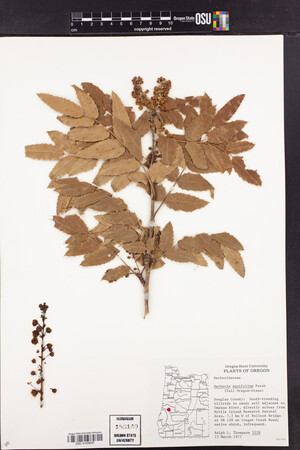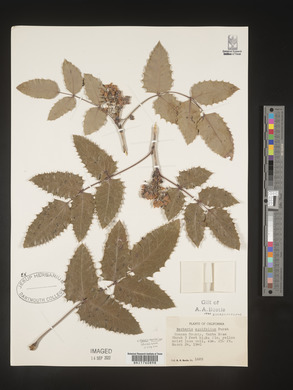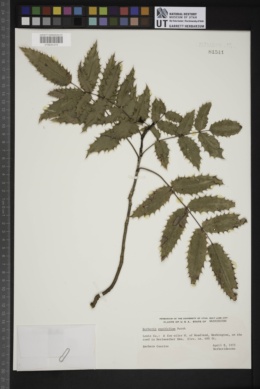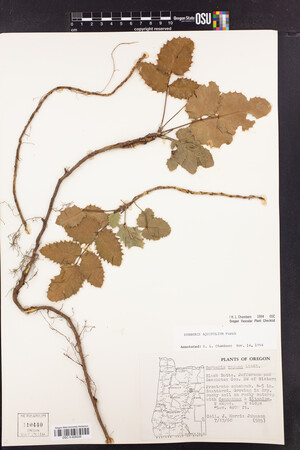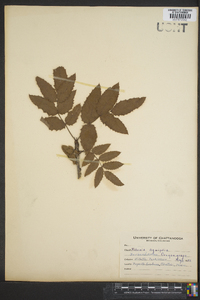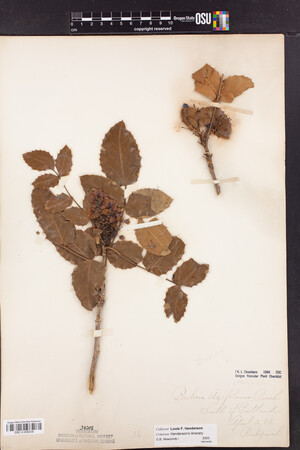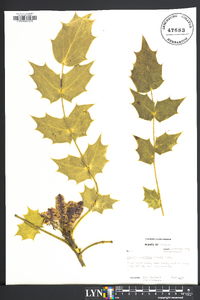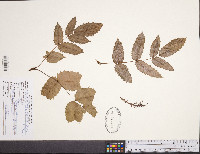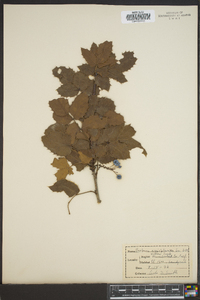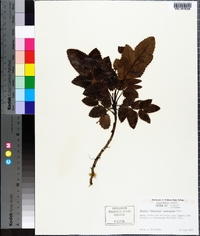
|
|
|
|
Family: Berberidaceae
Holly-Leaf Oregon-Grape, more...hollyleaved barberry, Oregon grape
[Berberis aquifolium Pursh, moreBerberis aquifolium aquifolium , Mahonia piperiana Abrams, Mahonia undulata Ahrendt, Odostemon aquifolium (Pursh) Rydb.] |
Shrubs , evergreen, 0.3-3(-4.5) m. Stems usually monomorphic, seldom with short axillary shoots. Bark of 2d-year stems gray-brown or purplish, glabrous. Bud scales 4-8(-14) mm, deciduous. Spines absent. Leaves 5-9-foliolate; petioles 1-6 cm. Leaflet blades thin and flexible or rather rigid; surfaces abaxially glossy, smooth, adaxially glossy, green; terminal leaflet stalked, blade 5.1-8.7(-14.5) × 2.4-4.5(-5.5) cm, 1.7-2.5 times as long as wide; lateral leaflet blades lance-ovate to lance-elliptic, 1(-3)-veined from base, base obtuse or truncate, rarely weakly cordate, margins plane or undulate, toothed, each with 5-21 teeth 0-2 mm tipped with spines to 0.8-2.2 × 0.2-0.3 mm, apex acute or sometimes obtuse or rounded. Inflorescences racemose, dense, 30-60-flowered, 3-9(-11) cm; bracteoles membranous, apex rounded or obtuse, sometimes apiculate. Flowers: anther filaments with distal pair of recurved lateral teeth. Berries blue, glaucous, oblong-ovoid, 6-10 mm, juicy, solid. 2 n = 28, 56. Flowering winter-spring (Mar-Jun). Open woods and shrublands; 0-2100 m; B.C.; Calif., Idaho, Mont., Oreg., Wash. Berberis aquifolium is the state flower of Oregon. It is widely used as an ornamental and has been reported as an escape from cultivation in scattered localities across the continent (Ontario, Quebec, central California, Michigan, and Nevada). Berberis aquifolium is resistant to infection by Puccinia graminis . Medicinally, various root preparations of Berberis aquifolium were used by Native Americans for stomach trouble, hemorrhages, and tuberculosis; as a panacea, a tonic, a gargle, and an eye wash; and to purify blood. Leaves and roots were used in steam baths to treat yellow fever; karok was used as a poison; and the tips of stems were used to treat stomach aches (D. E. Moermann 1986).
PLANT: Shrubs or subshrubs; wood and inner bark yellow. LEAVES: (in ours) odd-pinnate or trifoliolate, the leaflets thick, evergreen, spiny-toothed, more or less conspicuously reticulate-veined. INFLORESCENCE: racemose to corymbose or umbellate, solitary in the leaf axils or in fascicles; ultimate branches of inflorescence (pseudopedicels) arising from the axils of a single bract; bracteoles 0-2, appressed to calyx or 0-1 cm below it. FLOWERS: yellow; sepals 6 or 9, in 2 or 3 series; petals 6, in 2 series; stamens 6, in 2 series; filaments sometimes bearing 2 teeth at apex; anthers opening by 2 apical valves. FRUITS: few-seeded berries. NOTES: Ca. 500 spp. widely distributed in Eurasia and the Western Hemisphere. All the Arizona species belong to the group often segregated as the genus Mahonia on the basis of compound leaves. Fruits of the members of this genus are edible and often made into jelly. Wood is used in folk medicine since it contains berberine, a compound with antimicrobial properties. A brilliant yellow dye has been obtained from roots and stems. Name apparently of Arabic origin. REFERENCES: Laferrière, Joseph E. 2001. Berberidaceae. J. Ariz. - Nev. Acad. Sci. Volume 26(1). Shrub 30 cm - 4.5 m tall Leaves: alternate, pinnately compound, short-stalked, evergreen, with five to nine leaflets. Flowers: borne 30 to 60 in a dense inflorescence 3 - 11 cm long, subtended by membrane-like bracts with rounded to blunt tips. The six yellow petal-like sepals fall soon after flowering, each of the six yellow petals has two basal glands, and each filament has a pair of curved lateral teeth. Fruit: a blue to black berry, 6 - 10 mm long, oblong to egg-shaped, juicy, covered with a whitish waxy coating (glaucous). Twigs: stout, grayish brown at maturity, usually lacking short lateral branchlets. Leaflets: stalked only on terminal leaflet, shiny dark green, becoming purple in winter, 5.1 - 8.7 cm long, 2.4 - 4.5 cm wide, narrow egg-shaped to narrow elliptic with a pointed to rounded tip and a rounded to squared base, usually stiff and leathery, with five to 21 spine-tipped teeth per side. Similar species: Berberis canadensis, Berberis thunbergii, and Berberis vulgaris have short lateral branchlets, spines, simple leaves, and red berries. Berberis repens is low-growing with dull leaves that are warty beneath. Flowering: April to May Habitat and ecology: Native to the northwestern United States and British Columbia, Canada. Only one voucher of this species was collected in the Chicago Region. The plant was growing in a foredunes flat of the Indiana Dunes National Lakeshore. Occurence in the Chicago region: non-native Notes: This species is the state flower of Oregon and is often used in the home landscape. It has escaped from cultivation in some areas of the country. Etymology: Berberis is a Latinized form of the Arabian name for barberry. Aquifolium is the classical name for holly. Author: The Morton Arboretum From Flora of Indiana (1940) by Charles C. Deam Indiana Coefficient of Conservatism: C = null, non-native Wetland Indicator Status: n/a |

